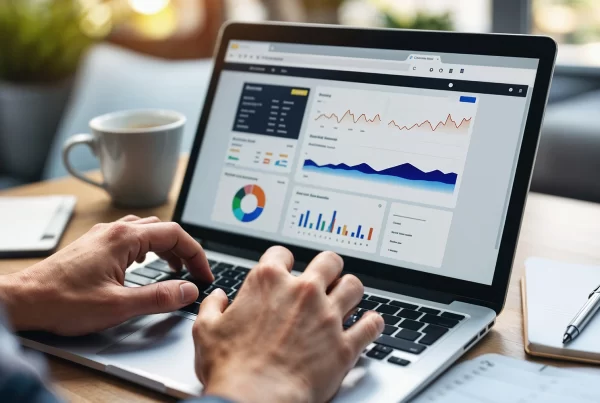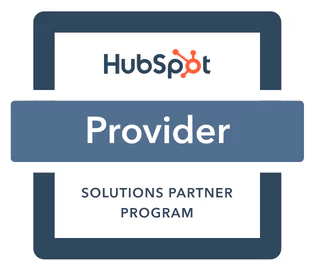
TL;DR
Attracting any traffic isn’t enough—your SEO should target users ready to buy.
High-intent keywords help you reach potential customers actively searching for your services.
Understanding search intent lets you create content that converts, not just informs.
Optimizing for both technical and local SEO boosts visibility with serious buyers.
Focus on quality leads to improve conversion rates and drive better ROI.
Table of Content
1. Introduction: Why Intent-Driven SEO Matters
2. Understanding Customer Intent in SEO
3. Why High-Intent Keywords Matter?
4. Identifying High-Intent Keywords
5. Tools and Methods for Finding Relevant Keywords
6. Creating Content for High-Intent Users
7. Crafting Valuable Content
8. Optimizing for SEO and Local Searches
9. Measuring Success and Adjusting Your Strategy
10. Conclusion
Introduction
Attracting visitors to your website isn’t enough for long-term business growth. The goal should be to attract visitors who are genuinely interested in what you offer—those ready to engage or make a purchase. This is where search engine optimization (SEO) comes in. SEO helps you attract traffic, but the true power lies in using it to connect with high-intent buyers—people actively looking for solutions like yours. In this guide, we’ll show you how to fine-tune your SEO strategy to identify, attract, and convert high-intent users, ultimately driving business success.
Understanding Customer Intent in SEO
When people search online, they do so with a specific intent. Understanding the purpose behind a search helps you customize your SEO strategy.
There are four main types of search intent:
- Informational: Searching for information (e.g., “how to fix a leaking faucet”).
- Navigational: Looking for a specific website or service (e.g., “Facebook login”).
- Commercial Investigation: Researching options before making a purchase (e.g., “best waterproof jackets”).
- Transactional: Ready to make a purchase or take immediate action (e.g., “buy running shoes size 9” or “emergency plumber near me”).
While all types of intent are important, focusing your SEO efforts on commercial and transactional intent is key, as these users are closer to making a purchase.
Why High-Intent Keywords Matter
High-intent keywords are words or phrases that show a user is ready to act or buy. Targeting these keywords is crucial because it increases your chances of conversion. Here’s why high-intent keywords are essential:
- Increase Conversion Rates: People searching with high intent are more likely to complete a purchase.
- Maximize Marketing ROI: By focusing on users who are ready to make a decision, your SEO efforts yield higher returns.
- Attract Qualified Leads: Visitors who are searching with the intention to buy already have a need for your product or service.
By focusing on high-intent keywords, your website will show up at a critical decision-making stage for potential customers, boosting the likelihood of conversion.
Identifying High-Intent Keywords
High-intent keywords usually include specific terms that show a user is ready to take action. Some examples include:
- Purchase terms: “Buy,” “order,” “shop.”
- Price terms: “Cost,” “price,” “discount,” “affordable.”
- Comparison terms: “Vs,” “compare,” “alternative.”
- Review/Quality terms: “Review,” “best,” “top-rated.”
- Specific terms: Product names, model numbers (e.g., “Samsung Galaxy S25 case”).
- Local terms: “Near me,” “in [city]” (e.g., “best pizza near me”).
- Action terms: “Hire,” “trial,” “demo,” “quote.”
These keywords show a user is actively considering their options and is likely ready to make a purchase.
Tools and Methods for Finding Relevant Keywords
To find high-intent keywords, use the following methods:
- Keyword Research Tools: Use tools like Google Keyword Planner, SEMrush, and Ahrefs to filter keywords with high intent and relevant modifiers.
- Competitor Analysis: Look at the keywords your competitors are ranking for to find opportunities.
- SERP Analysis: Analyze Google’s “People also ask” and “Related searches” sections to identify popular queries.
- Customer Insights: Examine customer reviews, feedback, and sales inquiries to understand the language customers use.
- Long-Tail Keywords: Focus on longer, more specific phrases that reflect high-intent needs.
Creating Content for High-Intent Users
Once you’ve identified high-intent keywords, tailor your content to meet the needs of these users. Here’s how:
- Product/Service Pages: Provide detailed information about your offerings, including features, benefits, pricing, and reviews. Include clear calls to action, such as “Buy Now” or “Request a Quote.”
- Comparison Pages: Create side-by-side comparisons of your product and competitors to highlight your unique advantages.
- Pricing Pages: Display transparent pricing and different packages to help users make decisions quickly.
- Lead Generation Pages: Offer consultations, demos, or free trials with strong calls to action to encourage users to take the next step.
Ensure these pages load quickly, are mobile-friendly, and provide all the necessary information to help users make decisions.
Crafting Valuable Content
Your content should align with what the user is searching for. Here’s how to create valuable content:
- Clarify Your Purpose: Provide direct answers to the user’s question or guide them towards a desired action.
- Clear Instructions: Use clear and actionable prompts like “Add to Cart” or “Request a Demo.”
- Build Trust: Include testimonials, reviews, case studies, security badges, and clear contact information.
- Highlight Benefits: Show how your product or service solves the user’s problem.
- Use Keywords Naturally: Include your high-intent keywords in titles, headings, and throughout the content, but avoid keyword stuffing.
Optimizing for SEO and Local Searches
Technical SEO:
To improve visibility and help high-intent users find your site, make sure your website is well-optimized. Key elements include:
- Site Speed: Fast loading times are crucial, so optimize images and code to enhance speed.
- Mobile-Friendliness: Many high-intent searches are done on mobile, so ensure your site is mobile-friendly.
- Structured Data (Schema): Use schema markup for products, reviews, and other relevant content to improve your search results with rich snippets.
- Easy Navigation: Make it easy for users to find important pages like pricing or contact forms.
Local SEO:
For businesses targeting local customers, regional SEO is vital. To optimize for “near me” searches:
- Keep your Google My Business profile up-to-date.
- Ensure your name, address, and phone number are consistent across all listings.
- Use location-based keywords like “best plumber in [city]” to attract local customers.
Measuring Success and Adjusting Your Strategy
Track the effectiveness of your SEO strategy by monitoring:
- Conversion Rate: The percentage of visitors who complete a purchase or fill out a form on high-intent pages.
- Lead Quality: Assess the relevance and likelihood of leads to convert.
- Keyword Rankings: Keep track of how well your high-intent keywords are ranking.
- Bounce Rate and Time on Page: Analyze how engaged users are with your conversion pages.
- Return on Investment (ROI): Evaluate the revenue generated from your SEO efforts.
Continuous Improvement
SEO is an ongoing process. Regularly evaluate the performance of your keywords, content, and website to make adjustments as needed. Stay updated on algorithm changes, monitor competitor activity, and revise content to keep it relevant.
Conclusion
By shifting your SEO focus from attracting any traffic to specifically targeting high-intent customers, you can enhance your conversion rates and overall ROI. Understanding search intent, using the right keywords, creating valuable content, and optimizing for both technical and local SEO will help you connect with customers who are ready to make a purchase. With a strategic, intent-focused approach, you can turn search engine visitors into loyal buyers.










